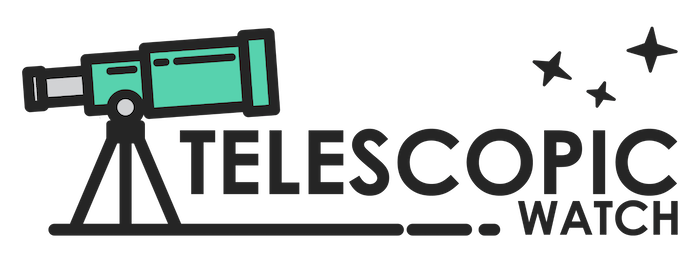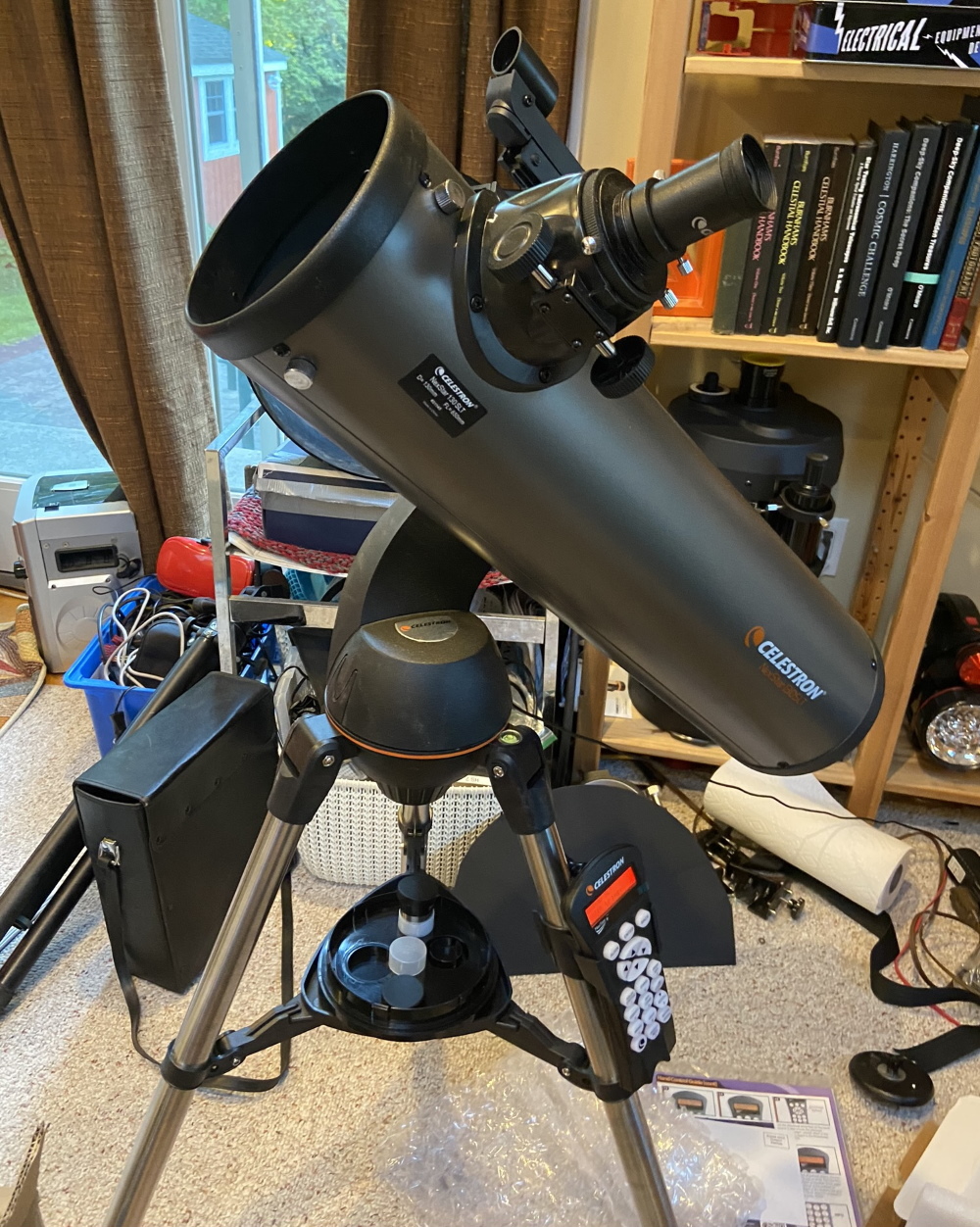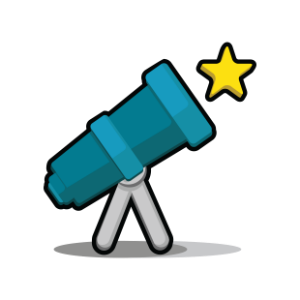Optical Performance Overview
The Celestron NexStar 130SLT is a standard Newtonian with a 130mm aperture and f/5 focal ratio, like the Celestron Astro Fi 130, Celestron StarSense 130mm Dobsonian, and many others that I’ve used and reviewed.
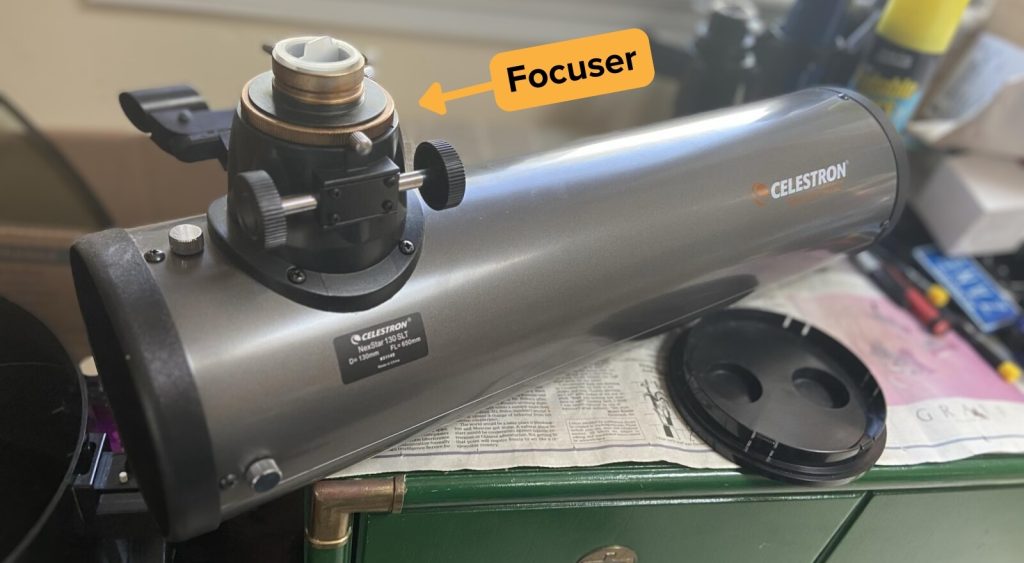
At a focal ratio of f/5, there is some coma, as expected, and I’ve observed that views through some of my inexpensive eyepieces gradually lose sharpness toward the edge of the field.
Collimation accuracy is also rather important, but it’s not that difficult to get an f/5 Newtonian collimated with even the most basic collimation cap or by using a bright star.
NexStar 130SLT uses a plastic 2” focuser, which is theoretically capable of handling 2” eyepieces. But I think it’s questionable how well the focuser can handle a heavy 2″ accessory. The secondary mirror might not be big enough to fully illuminate the wider field of view of some of the wide-angle 2″ eyepieces, causing vignetting where the edges of the view are darkened or cut off. Also, the too-small SLT mount might not be able to handle another kilogramme of weight from the accessory being added to it.
Included and Aftermarket Accessory Recommendations
The 130SLT includes two 1.25” Kellner eyepieces: a 25mm for 26x magnification and a 10mm for 65x magnification. These are enough to get you started, but you’ll want additional eyepieces for more magnification options, particularly for viewing fine detail on the Moon and planets or splitting double stars.
Aside from its less-than-stable mount, the Celestron NexStar 130SLT’s biggest flaw I see is its very short focal length of only 650mm. With such a low focal length, even a 6mm “goldline” that I often recommend for high power provides a meagre 108x magnification. The best planetary and lunar views with the 130SLT are arguably obtained at magnifications between 140 and 180x when atmospheric conditions permit, and for that, I’d recommend something like the Astromania 4mm Planetary, which will give you 163x with the 130SLT.
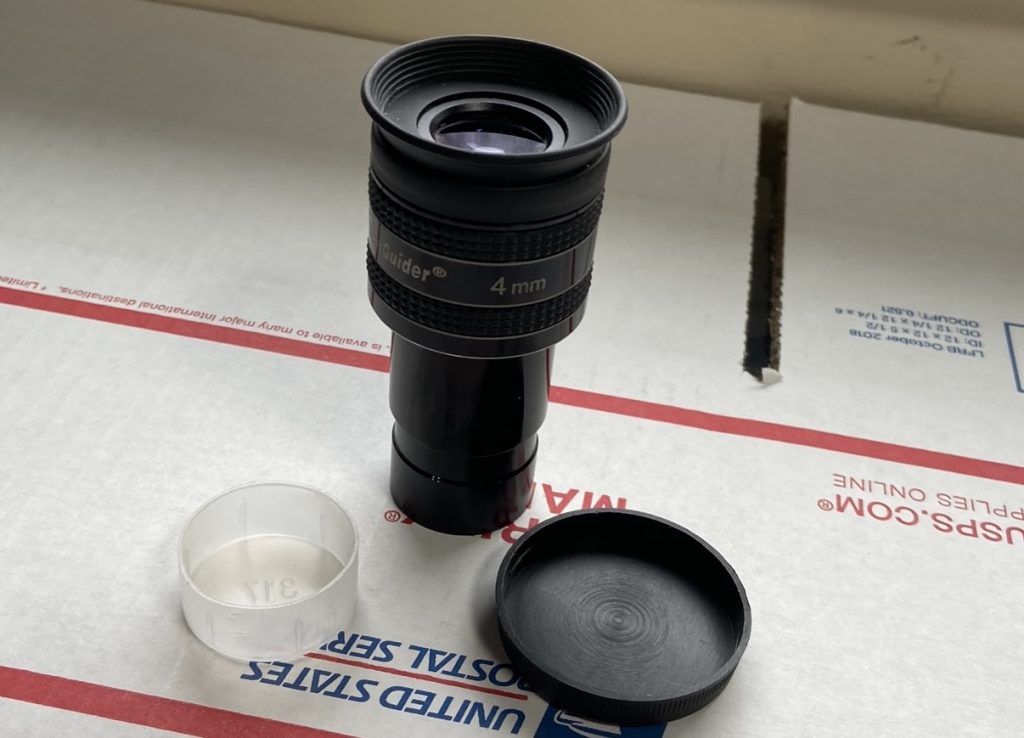
For aligning the mount to the sky, the 130SLT includes Celestron’s standard StarPointer red dot sight, which is all you really need.
The Simple, But Shaky Alt-Az Mount
The Celestron NexStar SLT mount is a pretty simple, inexpensive alt-azimuth mount that moves up and down, left-to-right.
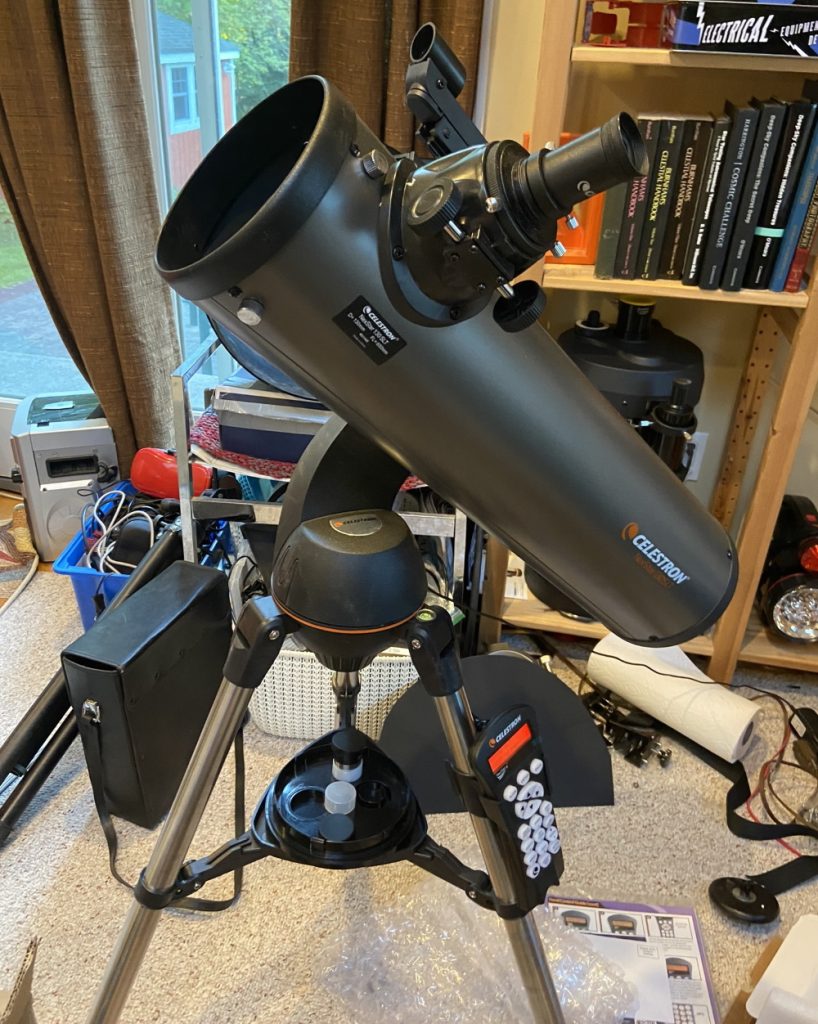
To use it, you enter the time, date, and your location, then sight the telescope at any two or three bright stars. The mount can then map out the rest of the sky and point the telescope at any object of your choosing. This is fairly standard for most GoTo mounts.
The SLT mount uses a Vixen dovetail saddle, so I can easily swap in other telescopes with Vixen dovetail bars if I wish, provided they don’t exceed the SLT mount’s weight capacity or crash into the base.
To me, the SLT mount looks well-made and performs okay for the most part. But I think its main flaw is the skinny steel tripod legs supplied with it. They easily twist and buckle when I extend it to a comfortable height, making the scope’s pointing less-than-accurate. I can compensate for this issue with some DIY workarounds, but for you, it’s probably easier to just buy a different telescope with a more solid mounting.
Astrophotography with the NexStar 130SLT
The 130SLT’s mount does track, but it’s not accurate enough for serious deep-sky astrophotography.
The short focal length of the scope itself doesn’t lend itself well to planetary imaging. A 5x Barlow and a planetary camera will let you photograph Jupiter, Saturn, Mars, and the Moon at a reasonable sampling size. But it’s a cumbersome setup, and I know of many better telescopes for the job at this price point if planetary astrophotography is your primary goal.
Alternative Recommendations
The Celestron NexStar 130SLT’s poor value for the price, less-than-steady tripod, and cumbersome hand controller eliminate it from being a strong recommendation in our book. Here are some of our alternative picks, sorted by price and ranked from best to worst in value and capability.
Under £550
- The StellaLyra 8”/Zhumell Z8/Orion SkyLine 8 offers 2.5 times as much light-collecting surface area thanks to its huge 8” primary mirror, giving you 250% brighter images – and nearly double the resolving power. The AD8/Z8 features a dual-speed 2” Crayford focuser, a simple, rock-solid, and easy-to-use Dobsonian mount, and a wide assortment of well-made accessories to get you started with.
- The Ursa Major 8 offers 250% more light gathering ability than the NexStar 130SLT, as with any 8” telescope, atop a rock-steady Dobsonian mount with a solid mechanical design. The included features and accessories, however, are a bit lacking out of the box compared to some of the other 8” Dobsonian options available at this price point.
- The Sky-Watcher Virtuoso GTi 150P offers slightly more aperture – and thus greater resolving power and light-gathering ability – than the NexStar 130SLT with a GoTo mount that’s operated exclusively via your smartphone or tablet with the SynScan or SkySafari Pro app. The 150P can also be aimed manually, and features a collapsable tube for maximum portability. A manual version, the Heritage 150P, is available at a lower price and is identical apart from the lack of motorised tracking or GoTo.
- The Sky-Watcher Virtuoso GTi 130P features the same optics as the 130SLT but in a collapsable tube with a dual manual/GoTo tabletop Dobsonian mount which is controlled with an app on your smartphone or tablet. The Virtuoso GTi 130P is available in a manual format, the Heritage 130P, as with the 150P from Sky-Watcher.
- The Celestron Astro-Fi 130 is essentially identical to the NexStar 130SLT, but features Celestron’s Astro-Fi onboard WiFi system allowing you to control the scope with your phone or tablet, and sturdier tripod legs that significantly improve usability and stability compared to the flimsy NexStar SLT tripod.
£550-£800
- The StellaLyra 10/Zhumell Z10/Orion SkyLine 10 has 4 times as much light gathering and double the resolving power of the NexStar 130SLT and features a stable, easy-to-aim manual Dobsonian base. As with the AD8/Z8, this scope features a huge variety of included accessories as well as built-in features like a dual-speed 2” Crayford focuser and a cooling fan for the primary mirror.
- The Celestron StarSense Explorer 8” Dobsonian features a computerised object locator in the form of Celestron’s StarSense Explorer technology, which turns your smartphone into an easy-to-use tool to aim the telescope around the night sky without any motors or even much in the way of an initial alignment. As with any 8” Dobsonian, the StarSense Explorer 8” delivers more than 2.5x the light gathering power and close to double the resolution of the NexStar 130SLT. The StarSense Explorer 8” Dobsonian also features cutouts in the base and handles built into the tube to enhance portability.
- The Sky-Watcher 8” FlexTube Dobsonian features a collapsable tube making it easier to store and transport than a regular 10” or 8” Dobsonian, along with a pair of eyepieces and a 9×50 straight-through finder included with the telescope. However, there’s no significant weight savings compared to a standard 8” and the scope needs a shroud to keep light and dew out of the open extended tube.
Aftermarket Accessory Recommendations
The NexStar 130SLT is supplied with a reasonably good pair of 1.25″ Kellner eyepieces, but to truly maximise the potential of this telescope, I suggest supplementing these with at least a few additional eyepieces, allowing for a broader range of magnifications.
For medium-power observation with the NexStar 130SLT, I recommend a 15mm “redline”/“goldline” eyepiece, which provides 50x magnification. Although the redline/goldline’s optical design loses some sharpness towards the edges of the field of view when used with a relatively fast scope like the NexStar 130SLT, it still performs quite well and delivers a wide apparent field of view of 66 degrees.
To achieve even higher magnification, consider acquiring a 6mm goldline/redline (108x magnification) and/or a 2x Barlow lens (which, when used with the provided 10mm Kellner eyepiece, achieves 130x magnification, and 144x/217x magnification when combined with the 9mm and 6mm redline/goldline eyepieces respectively). Due to the turbulence in our planet’s atmosphere, which can often cause blurred views, as well as the potential instability from wobbly tripod legs, you may find that magnifications over 200x are not frequently utilised with this telescope. Nonetheless, the NexStar 130SLT’s optics can theoretically handle up to 250x magnification.
Another accessory I would recommend is a rechargeable battery or power supply for the SLT mount, such as a generic lithium power bank option or the Celestron PowerTank Lithium. If you frequently use the telescope, you will likely consume a significant number of AA batteries, whereas infrequent use raises concerns about potential corrosion in the battery compartment. A rechargeable battery addresses both of these issues, eliminating the need to power the scope from your car or via a long extension cord, which can prove inconvenient. I would also highly recommend utilising a Cheshire collimation tool to ensure accurate collimation of the telescope, thus providing the sharpest views possible.
Lastly, a narrowband Ultra High Contrast (UHC)/OIII nebula filter can considerably enhance your observation experience of nebulae, such as the Orion Nebula, when used with the 130SLT or nearly any other telescope with adequate aperture. This specialist filter also simplifies the process of locating planetary nebulae by diminishing the brightness of surrounding stars and darkening the background sky. As a result, these elusive celestial objects become more readily discernible at lower magnifications, making them easier to track down.
What can you see with the Celestron NexStar 130SLT?
The wide field of view and large, but not huge, aperture of the Celestron NexStar 130SLT make it good for looking at large deep-sky objects like open star clusters like M11 and M45.
I also have no trouble viewing the Orion Nebula or the Swan, resolving a few stars in bright globular clusters, and spotting a few planetary nebulae like the Ring and Dumbbell.
Most galaxies remain little more than fuzzy blobs, though a few, such as M31 and M82, show dust lanes.
Keep in mind, however, that if maximum image brightness and detail are your goals, dark skies and aperture rule over all else. The 130SLT will struggle to show you much in the way of deep-sky views if you live in a city beyond the brightest star clusters.
The NexStar 130SLT can show a fair amount of detail on the moon and planets, provided the telescope is collimated well. But I should warn you that the 65x magnification that the stock 10mm eyepiece can provide isn’t exactly going to be jaw-dropping.
With a more powerful eyepiece (albeit not too powerful; remember, magnification isn’t everything), I’ve had no trouble spotting the cloud belts on Jupiter, the Cassini division in Saturn’s rings, and albedo features on Mars. Venus’ and Mercury’s phases, along with the moons of Jupiter and Saturn, can also be seen. Uranus and Neptune are easy to locate with the NexStar 130SLT’s GoTo system, but remain bluish-blurry dots at best and starlike points at worst.
Astrophotography with the NexStar 130SLT
The 130SLT’s mount does track, but it’s not accurate enough for serious deep-sky astrophotography. The short focal length of the scope itself doesn’t lend itself well to planetary imaging. A 5x Barlow and a planetary camera will let you photograph Jupiter, Saturn, Mars, and the Moon at a reasonable sampling size, but it’s a cumbersome setup, and there are better telescopes for the job if planetary astrophotography is your primary goal.
